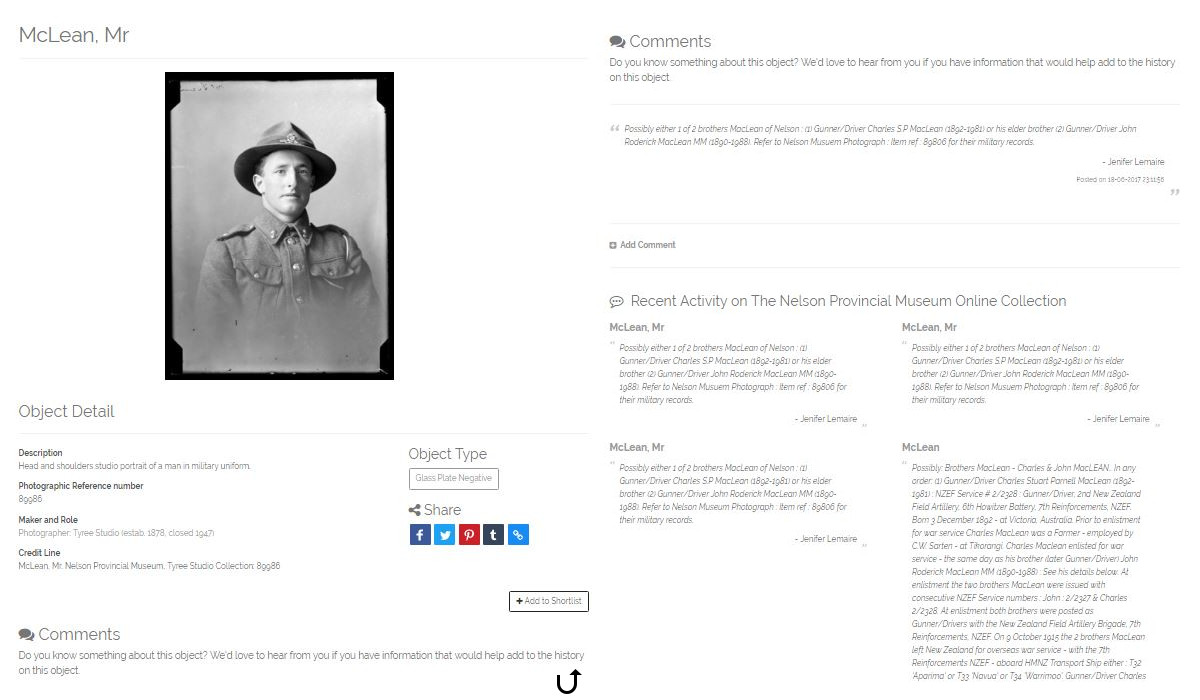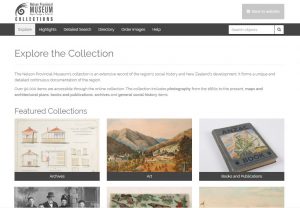It is great to receive comments on collection objects. Members of the audience can share their knowledge of who, when or what is represented. This knowledge can add to the provenance, it can bring new information or a new understanding. At the very least the ability to add comments to collection objects gives the audience the opportunity to be involved.

There are some great examples of audience engagement being central to museum projects. Auckland Museum Online Cenotaph is a comprehensive online hub for stories of New Zealand service personnel; it currently contains approximately 127,000 records in total with around 99,000 biographical records relating to WWI. Audience contributions are actively encouraged through Community Cenotaph, purpose-built, digitisation kiosks. The digitisation kiosks allow you to search Online Cenotaph, lay a virtual poppy against a specific person’s name and contribute additional information to the database.
In 2005, Puke Ariki received the donation of the Swainson/Woods Collection, a nationally and regionally significant photographic collection. While digitising the collection it was important for Puke Ariki to engage their audience. As the online collection was regularly updated the public was actively asked to contribute their knowledge. The result was huge public interaction which added to the success of the digitisation project.
But how do you find these comments in a large collection? How do you make these conversations easy to engage with? How do you make comments easy to find?
Solution
Nelson Provincial Museum has recently completed a redevelopment of its website. The new design is a beautiful combination of clear design in a responsive format. It is equally easy to use on a mobile or desktop.

The online collection has 90,273 objects. The majority of the objects online are Glass plate photographic negatives which have been digitised as part of a multi-year project. The museum receives regular online comments but with this many objects, it would be hard to keep up with new conversations. To solve this problem, at the bottom of each object page is a “Recent Activity on the Nelson Provincial Museum Online Collection” section where recently added comments can be found.
Nelson Provincial Museum has been using Vernon CMS to catalogue their collection since 2008, and Browser module to publish their collection online. With the website redesign, they also updated to the latest Browser version and configured a new microsite.

Results
The ‘comments’ section on Browser saves both the public and museum staff time by not having cumbersome paper forms to fill in every time someone wants to share information about an object.
Also, the ‘Recent Activity’ section puts the recent comments where visitors can see them. It adds a conversational tone to the collection and encourages users to join in. The visibility of recent comments has proved useful. For example, when a user saw a factual error in another user’s comment it led to a brief online discussion between the pair. The Museum was contacted by the original poster asking us to delete her original incorrect comment and replace it.
If comments are more accessible they gain more attention and greater engagement. Since the website redesign was launched in December 2016 there has been a 60% increase in comments posted on objects.